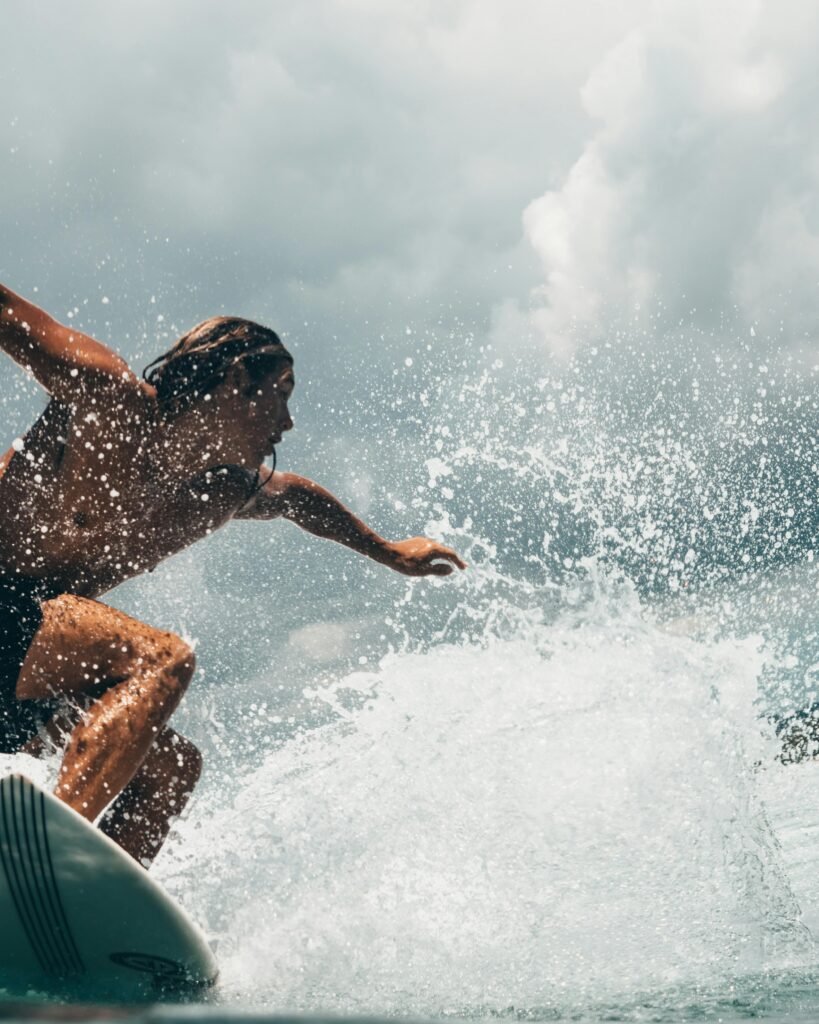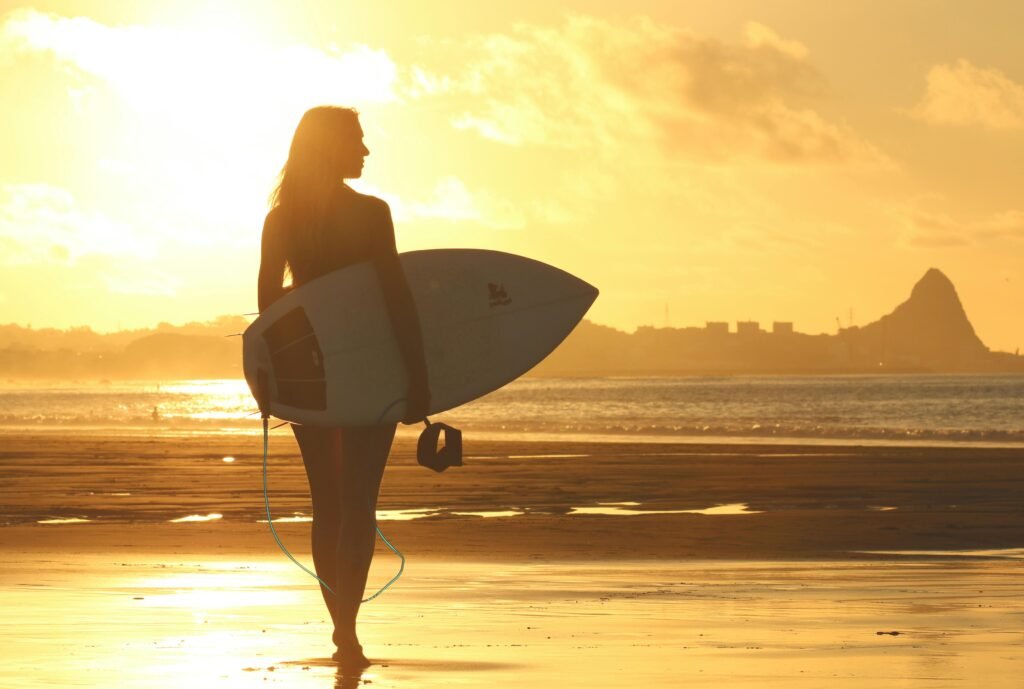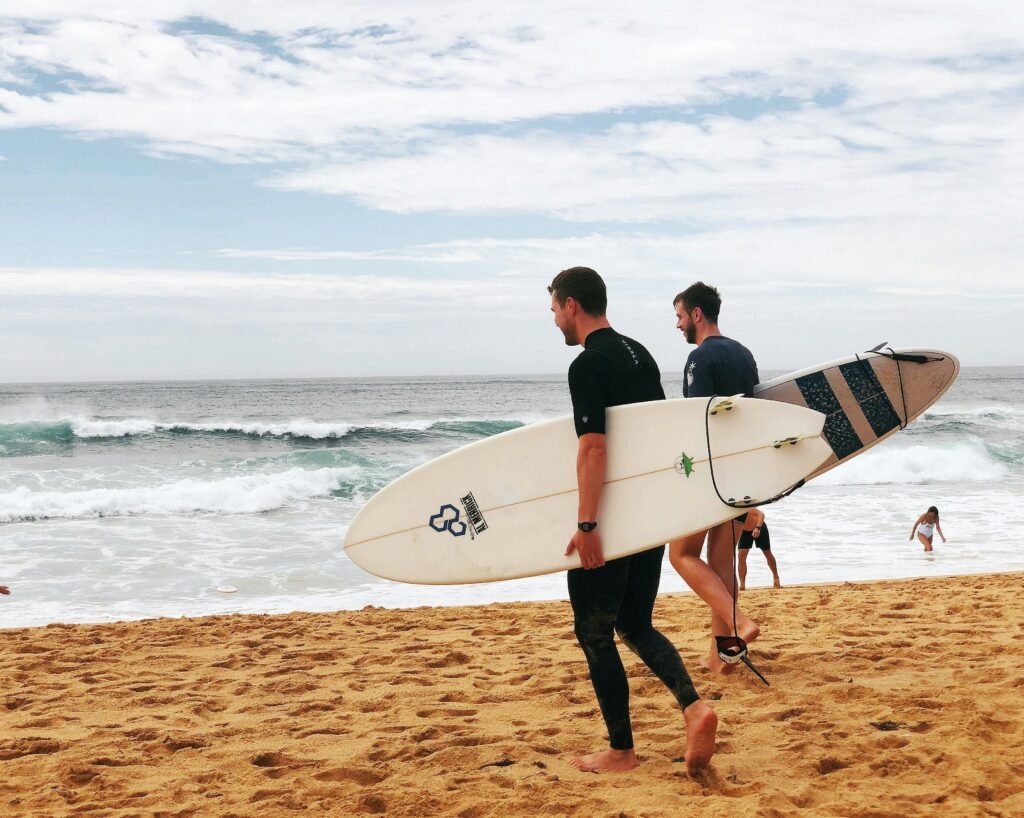Overview of California’s Surfing Scene
Surfing in California and its rich history dates back to the late 19th century when Hawaiian natives introduced the sport to the West Coast. The early 1900s marked a pivotal moment as surfing gained traction among locals, and notable figures such as George Freeth, often referred to as the “Father of Modern Surfing,” played a significant role in popularizing the sport. By the 1960s, the surfing culture exploded, accompanied by a distinctive lifestyle that incorporated fashion, music, and art, forever altering the fabric of California’s coastal communities.
Among the most iconic surf locations in California, Malibu stands out as a premier destination. With its perfect waves and picturesque scenery, it has been a hotspot for surfers since the 1960s. The famed point break attracts surfers from all backgrounds and skill levels. However, California’s surfing scene is not limited to these famous spots. From the challenging waves at Mavericks in Half Moon Bay to the beginner-friendly shores of La Jolla, the state’s diverse coastline offers a variety of surf conditions to suit all preferences.
What truly distinguishes California’s surfing community is its lasting influence on global trends. The state has been at the forefront of surfboard technology, fashion, and overall culture. Innovations such as the shortboard revolutionized the sport, leading to new styles of surfing that spread globally. Additionally, California’s surf culture has inspired countless films, music festivals, and events that celebrate the spirit of the sport, fostering a vibrant community that resonates far beyond its borders. This blend of history, culture, and diverse surf spots culminates in a unique surfing experience that continues to attract enthusiasts from all over the world.

Top Surfing Destinations in California
California is renowned for its diverse and vibrant surfing spots, attracting surfers of all skill levels from around the globe. Each location offers unique wave conditions, amenities, and atmospheres that contribute to the rich surfing culture of the state.
One of the most iconic spots is Malibu, known for its long, gentle waves that are perfect for both beginners and experienced surfers. The main break, Surfrider Beach, offers three distinct peaks, providing options for varying skill levels. The best time to surf Malbu is during the fall and early winter months when the swells are consistent. Amenities in the area include surf schools and rental shops, making it accessible for newcomers wanting to ride the waves.
Huntington Beach, often referred to as Surf City USA, boasts a vibrant surfing scene with wide sandy beaches ideal for catching waves. With its annual surf competitions, including the U.S. Open of Surfing, this destination is favored by tourists and locals alike. Surfing conditions are optimal throughout the year, but the summer months typically attract larger crowds. A range of facilities such as surf shops and rental services ensures that all surfers have access to equipment and lessons.
Another renowned location is Trestles, located within the San Onofre State Beach. This spot is celebrated for its high-quality waves which cater primarily to experienced surfers due to its fast and powerful swells. The best surfing conditions can be found during the late summer months. Trestles is less crowded compared to other spots, but it is essential for surfers to respect the local rules and etiquette. While it may not have extensive amenities, the natural beauty of the cliffs and the proximity to nature provide a unique surfing experience.
Beyond these prominent spots, California hosts a variety of hidden gems such as Santa Cruz, Pismo Beach, and Moonlight Beach, each offering a unique surfing atmosphere and conditions, making them worthwhile additions to any surfer’s itinerary.

Surfing Gear Essentials
When embarking on a surfing in California, having the right gear is crucial to ensure a fulfilling and safe experience. The primary component of surfing gear is, undeniably, the surfboard. There are various types of surfboards suitable for differing levels of expertise and conditions in California. Beginners often fare well with soft-top longboards due to their stability and ease of paddling. These boards, typically measuring 8 to 9 feet in length, provide a generous surface area, making it easier to catch waves. As surfers develop their skills, they may transition to shortboards or fish boards, which offer increased maneuverability and speed, particularly in more challenging surf conditions.
Alongside surfboards, the wetsuit is another essential piece of equipment for surfers in California. The state boasts a diverse coastline, resulting in varying water temperatures. Generally, wetsuits are made from neoprene, which provides both insulation and buoyancy. For Southern California, a 3/2mm wetsuit is often suitable for spring and summer, while fall might call for a 4/3mm wetsuit, particularly in Northern regions where water temperatures can drop significantly. Surfers should pay close attention to the fit and thickness of their wetsuits, as these factors directly affect comfort and performance while riding the waves.
Additionally, a range of accessories can enhance the surfing experience. A reliable leash is vital for keeping the surfboard attached to the surfer, preventing potential injuries to others in the water. Wax, applied to the board’s surface, ensures maximum traction, reducing the likelihood of slipping. Lastly, safety equipment, such as helmets and flotation devices, should not be overlooked, especially in crowded surf conditions. Collectively, equipping oneself with the appropriate gear ensures a more enjoyable and secure surfing experience along California’s captivating coastline.

Tips for Beginners and Advanced Surfers
Surfing in California offers an array of opportunities for surfers of varying skill levels, from novices to seasoned pros. For beginners aiming to build a solid foundation, several essential techniques and safety practices should be prioritized. One of the most critical skills is paddling; proper paddle technique involves using the arms effectively while maintaining a streamlined position on the board. This not only aids in catching waves but also reduces fatigue.
Once a beginner is comfortable paddling, the next step is learning to catch waves. Timing is paramount; surfers should observe wave patterns and start paddling as the wave approaches. Standing up on the board, or ‘pop-up’, is another fundamental skill. It is advisable for beginners to practice this motion on dry land before attempting it in the water, as it requires balance and coordination. In terms of safety, beginners should be educated on surf etiquette, including priority rules, and be aware of potential hazards, such as rip currents.
For advanced surfers, the focus shifts to refining techniques that enhance performance and safety. A crucial skill is the ability to read waves; understanding the nuances of wave formation allows surfers to position themselves effectively and execute maneuvers with precision. Advanced surfers can further improve their skills by incorporating aerial maneuvers and tricks into their repertoire. However, mastering these techniques necessitates extensive practice and a heart for competition.
In addition to technical skills, respecting fellow surfers and the ocean is paramount for all skill levels. Practicing good surfing etiquette, such as waiting for one’s turn and avoiding drop-ins, fosters a positive environment in the water. Additionally, understanding the dynamic nature of ocean conditions will enhance both safety and enjoyment while surfing in California.









